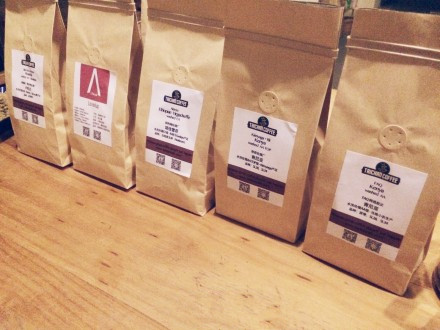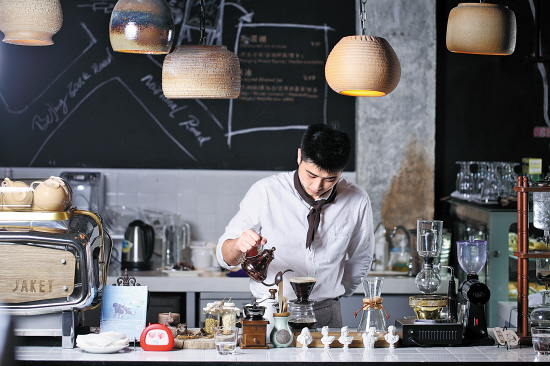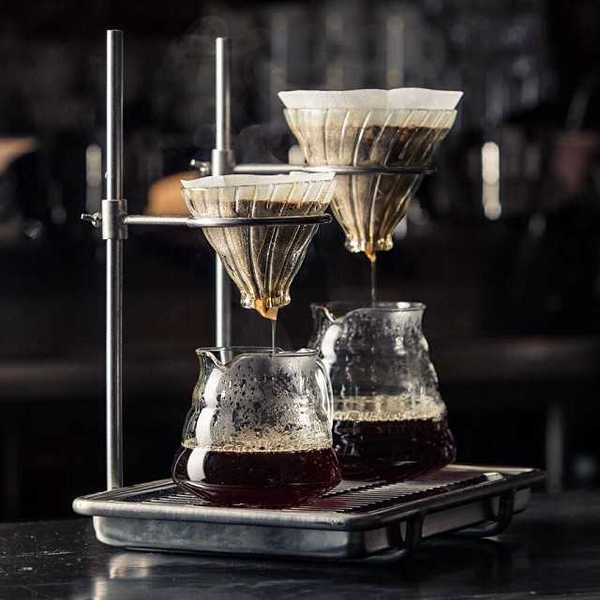The master taught you the secret of preserving coffee beans.
In order to maintain the aroma and quality of coffee, do not allow oxidation of roasted coffee beans, packaging and preservation of coffee beans has become a university. Coffee beans produce a lot of carbon dioxide after roasting, so coffee packaging should not only avoid contact with air oxidation, but also deal with the carbon dioxide produced by coffee beans.

Coffee beans are preserved in several ways:
(1)Gaseous packaging. The most common packaging, with glass cans, paper bags or plastic containers to package beans, powder, and then cover or seal packaging. Low preservation, and because of contact with the air at all times, need to drink as soon as possible, drinking period of about a week.
(2)Vacuum packing. Packaging containers (cans, aluminum foil bags, plastic bags) After filling with coffee, the air inside the container is evacuated. Although it is called vacuum, it actually removes at most 90% of air and is not suitable for preserving coffee powder.
(3)Gas filled packaging. A pinhole is designed on the metal bag. After filling the coffee, the inactive nitrogen gas is filled to squeeze out the carbon dioxide in the bag from the pinhole. This method is more popular, but after all the air ^: is exhausted, there will be some air from the pinhole back into the bag.
(4)Gas sorbent packaging. The sorbents made of deoxy and deoxy are placed in packaging bags, and the air in the packaging can be easily absorbed, and the carbonic acid gas generated by coffee can also be inhaled, but the disadvantage is that the aroma of coffee will also be absorbed.
(5)Roman packaging. This is currently the most ideal coffee packaging, all in the form of beans rather than powder packaging. It is similar to a pinhole metal bag, except that the gas inside the bag can be discharged through the pinhole, and the one-way piston can prevent the air outside the bag from entering the bag. Coffee makers cool the beans immediately after roasting and pump nitrogen into the bags to vent the gases. Although this packaging method is the most ideal, but the material is expensive, high cost, currently only the selection of coffee companies will use this packaging method.
Source: China Coffee Network
Important Notice :
前街咖啡 FrontStreet Coffee has moved to new addredd:
FrontStreet Coffee Address: 315,Donghua East Road,GuangZhou
Tel:020 38364473
- Prev

Pour out the heart water, the coffee smells good, the hand makes the coffee
Making a cup of hand-brewed coffee, filter cup and filter paper is essential for slow workers to make fine hand-brewed coffee. Liang Xuhuatu / Terry, a reporter from Yangcheng Evening News, is widely used in the coffee industry as a way to fully demonstrate the flavor and brewing technology of coffee beans. It takes years of practice to acquire eye-pleasing hand punching skills, and the whole process must be done.
- Next

The difference between siphon coffee and hand-brewed coffee
Hand brewing coffee uses filtration, while siphon coffee combines soaking and filtration, which can actually highlight the flavor, but now popular boutique coffee often uses filtering to brew coffee, so let's first introduce hand brewing coffee. I try to simplify the way I speak in vernacular, and then try not to write too much. I can almost publish a book after I have written it all, so it is big.
Related
- What is the meaning of lactic acid fermentation with coffee bean treatment?
- How to judge the state of foam by sound?
- How does the latte pull out the unicorn pattern? Come to get for a little trick to improve the flower pull!
- Will flower pulling affect the taste of the latte?
- Do you know the history of coffee?
- The difference between honey treatment and sun washing what is raisin honey treatment?
- What kind of milk can a novice use to make coffee foam to keep the foam longer? The correct method and skills of milking tutorial sharing
- Why do washed coffee beans taste sour? Flavor characteristics of washed Coffee
- Introduction to the skill of how to practice the size and height of water injection around the circle of hand-brewed coffee
- How do beginners practice coffee flower drawing from scratch?

